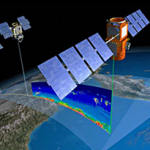
2020年1月22日の第1回で紹介した様に、LiDARは、Light Detection and Ranging (光検出と測距)もしくはLaser Imaging Detection and Ranging (レーザー画像検出と測距)の略で、光を用いたリモートセンシング技術の一つである。今回は、LiDAR技術の宇宙分野での応用に関して、NASAおよびJAXAの取組みを紹介する。宇宙分野への応用では50年以上の歴史がある。LiDARはこれまでに、距離測定、地球の大気および植生の観測、月面探査、小惑星への着陸時の支援(はやぶさ、はやぶさ2)等で大きな成果をあげている。尚、航空分野での応用および自動運転などの移動体への応用に関しては次回以降に紹介予定。
(As explained in the first report dated January 22, LiDAR, the acronym of Light Detection and Ranging or Laser Imaging Detection and Ranging, is one of remote-sensing technologies applying optics. In this report, the applications to space are introduced. There is a long history of 50 years for LiDAR in the space arena. LiDAR has achieved in ranging, measurement of atmosphere and vegetation of the earth, exploration of moon surface, support for landing to asteroids (such as Hayabusa and Hayabusa-2) and so forth. Regarding the applications to aviation and vehicles including automatic driving are reported in the next report.)